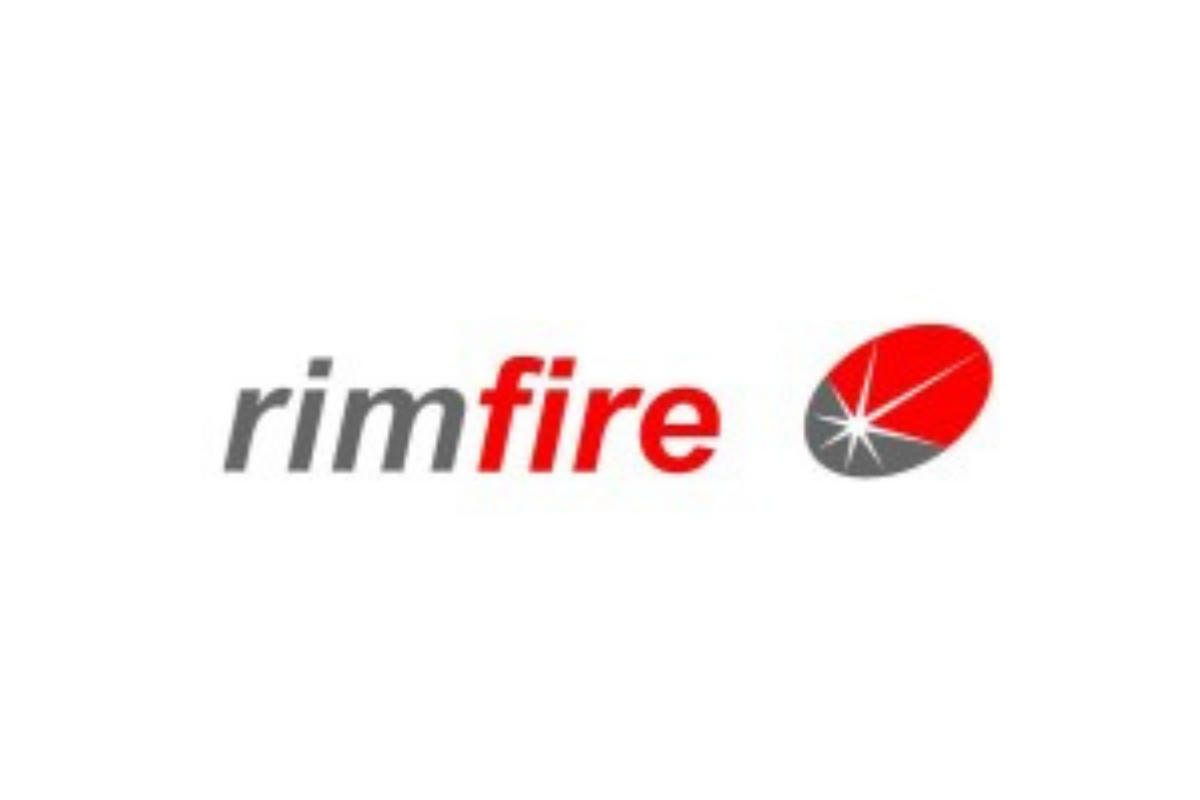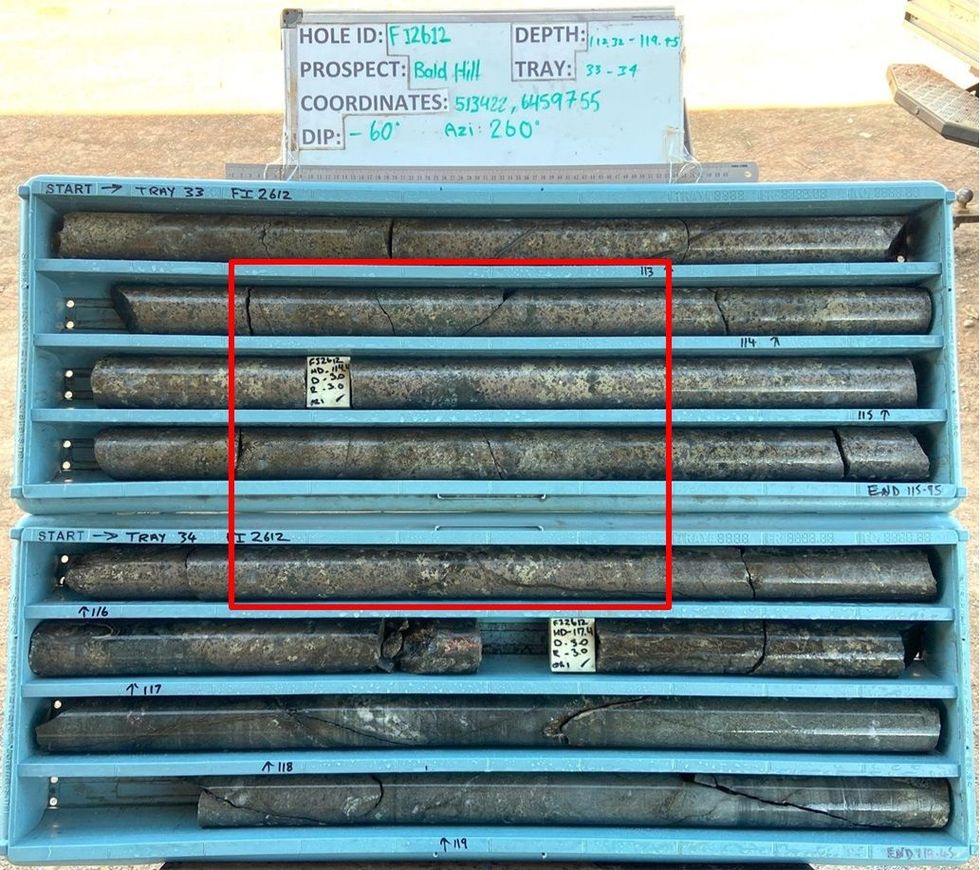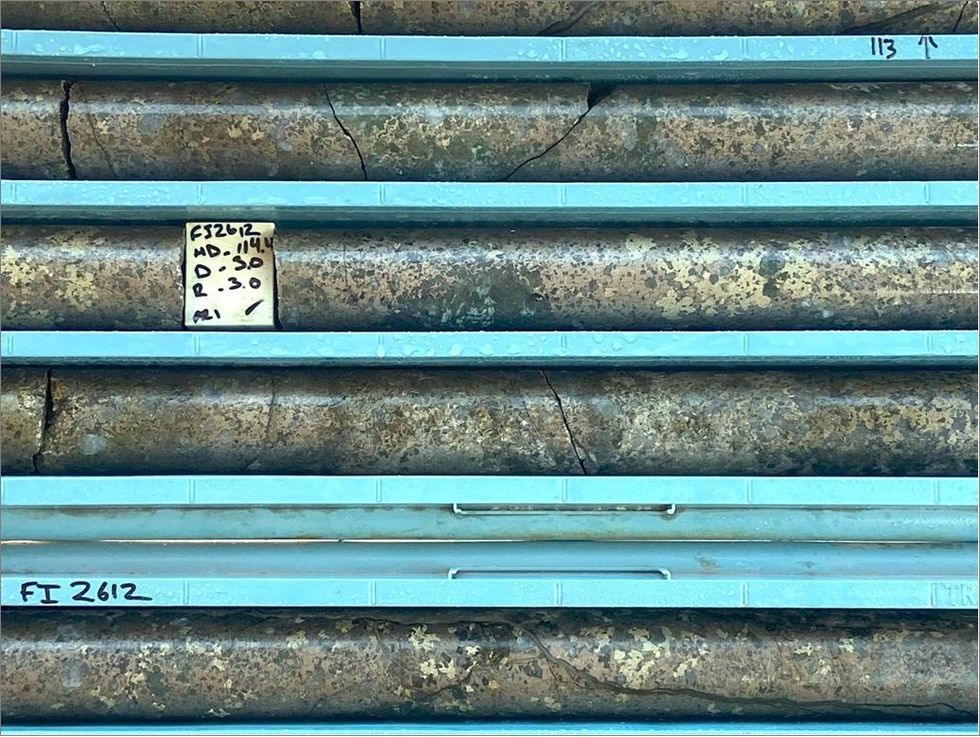
- WORLD EDITIONAustraliaNorth AmericaWorld
Investing News NetworkYour trusted source for investing success
August 25, 2024
Rimfire Pacific Mining (ASX: RIM, “Rimfire” or “the Company”) is pleased to advise that the first two diamond drill holes completed as part of a larger 6 hole (~1,000 metre) step out drilling program at the Bald Hill Cobalt Copper Prospect, have successfully intersected multiple broad zones (downhole widths) of sulphide mineralisation 100 – 200m away from previous high-grade cobalt drill intercepts.
Highlights
- The first two holes in the current diamond drilling campaign have intersected multiple broad zones (downhole widths) of sulphide mineralisation 100 – 200m away from previous high-grade cobalt drill intercepts;
- FI2612 intersected disseminated and banded sulphides (pyrite) between 70 and 110m, and semi-massive sulphides (pyrrhotite) between 110 and 129m
- FI2613 intersected disseminated and banded sulphides (pyrite) between 67 and 105m, disseminated and fracture – fill sulphides (pyrite) between 105 and 128.5m and brecciated semi – massive sulphides (pyrrhotite) between 151.9 and 185.1m
- The sulphides intersected in the current drillholes are visually similar to the high-grade mineralised intercepts obtained in Rimfire’s previous drilling at Bald Hill with assay results required for confirmation
- First assay results expected within 6 to 8 weeks as the 6-hole diamond drilling program continues
Commenting on the announcement, Rimfire’s Managing Director Mr David Hutton said: “The Bald Hill prospect continues to grow with broad zones of great - looking sulphides intersected in the latest step out holes.
The diamond drilling is helping our geologists build a detailed model for the prospect and we look forward to seeing what the rest of the program delivers.
Drilling, geological logging, and sampling is continuing, with first assays expected in 6 to 8 weeks’ time and Rimfire looks forward to providing further updates as new information comes to hand.”


Click here for the full ASX Release
This article includes content from Rimfire Pacific Mining Limited, licensed for the purpose of publishing on Investing News Australia. This article does not constitute financial product advice. It is your responsibility to perform proper due diligence before acting upon any information provided here. Please refer to our full disclaimer here.
RIM:AU
The Conversation (0)
03 February
Currajong confirmed as a new high-grade scandium opportunity
Rimfire Pacific Mining (RIM:AU) has announced Currajong confirmed as a new high-grade scandium opportunity
29 January
December 2024 Quarterly Activities and Cashflow Report
Rimfire Pacific Mining (RIM:AU) has announced December 2024 Quarterly Activities and Cashflow Report
16 December 2024
Latest drill results upgrade Murga - clarification
15 December 2024
Latest scandium results upgrade Murga Exploration Target
Rimfire Pacific Mining (RIM:AU) has announced Latest scandium results upgrade Murga Exploration Target
Latest News
Latest Press Releases
Related News
TOP STOCKS
American Battery4.030.24
Aion Therapeutic0.10-0.01
Cybin Corp2.140.00
